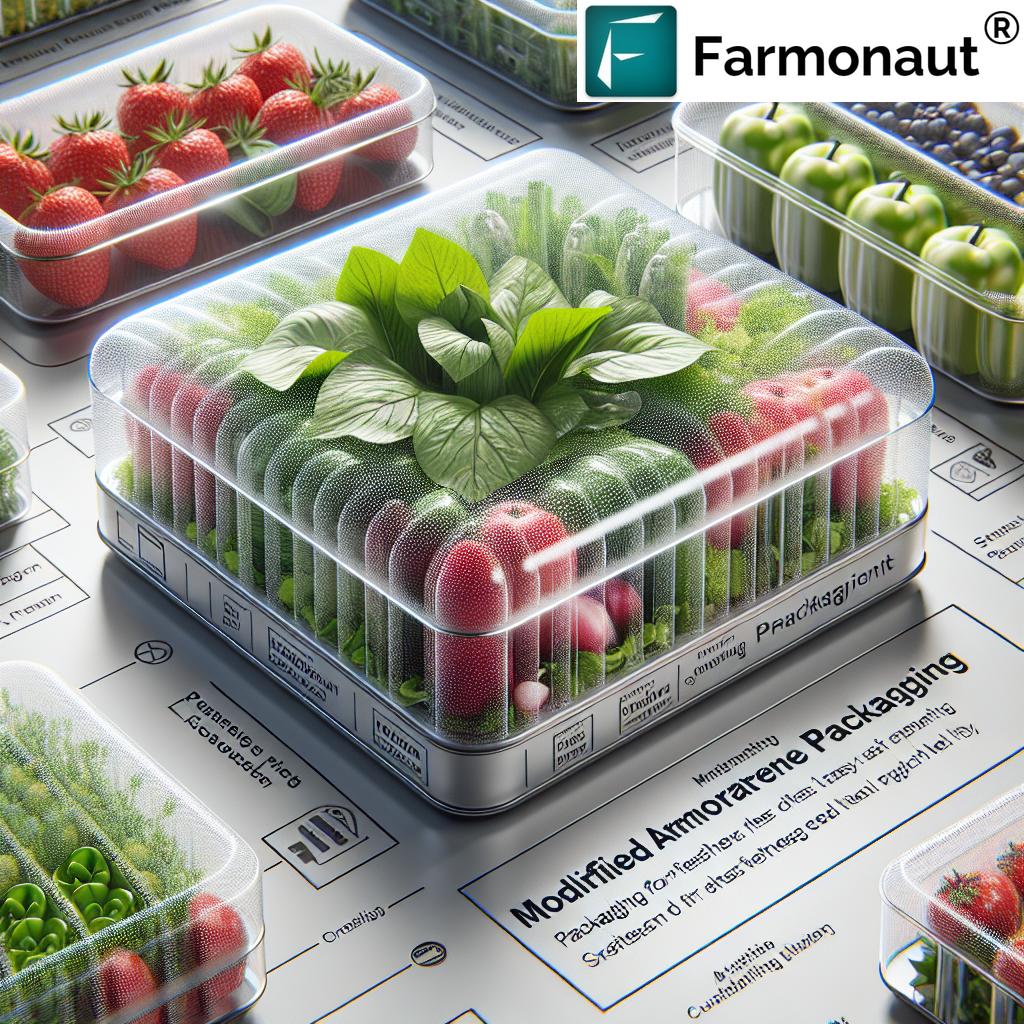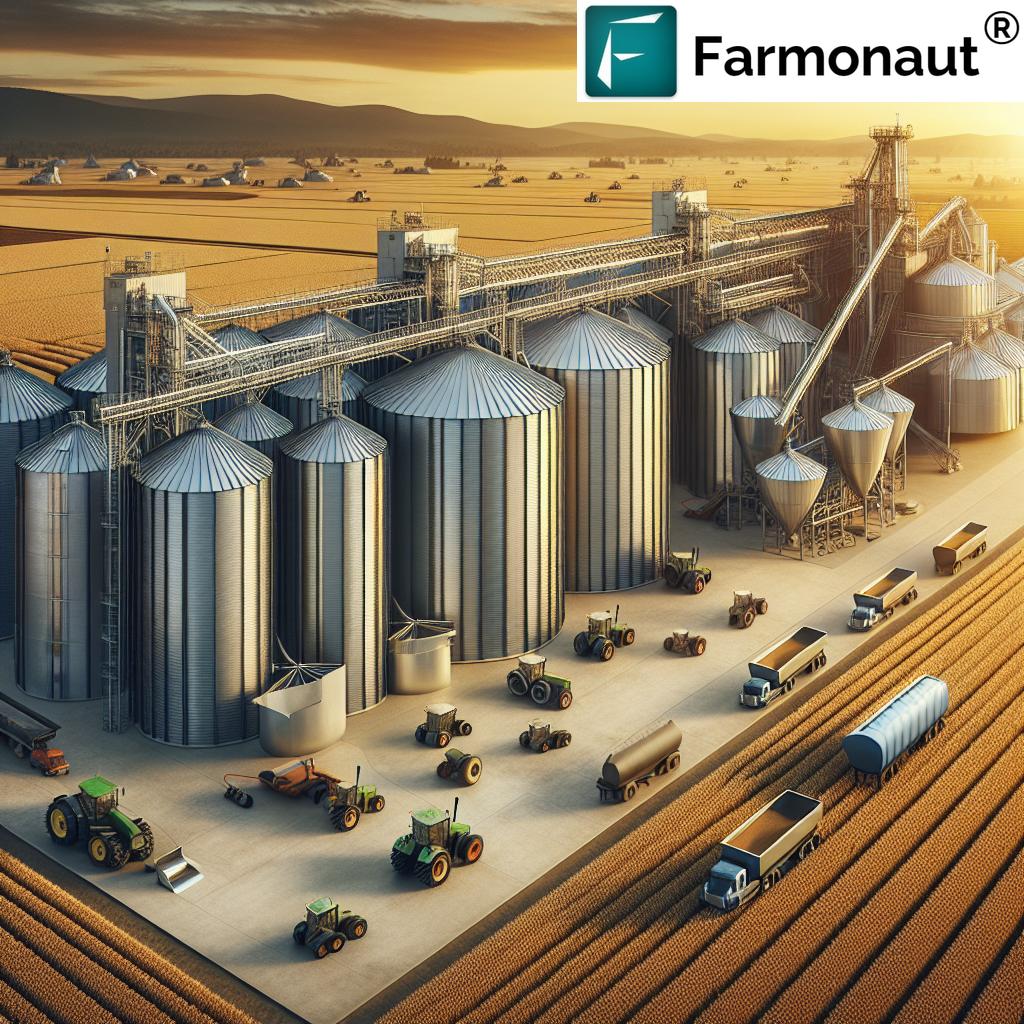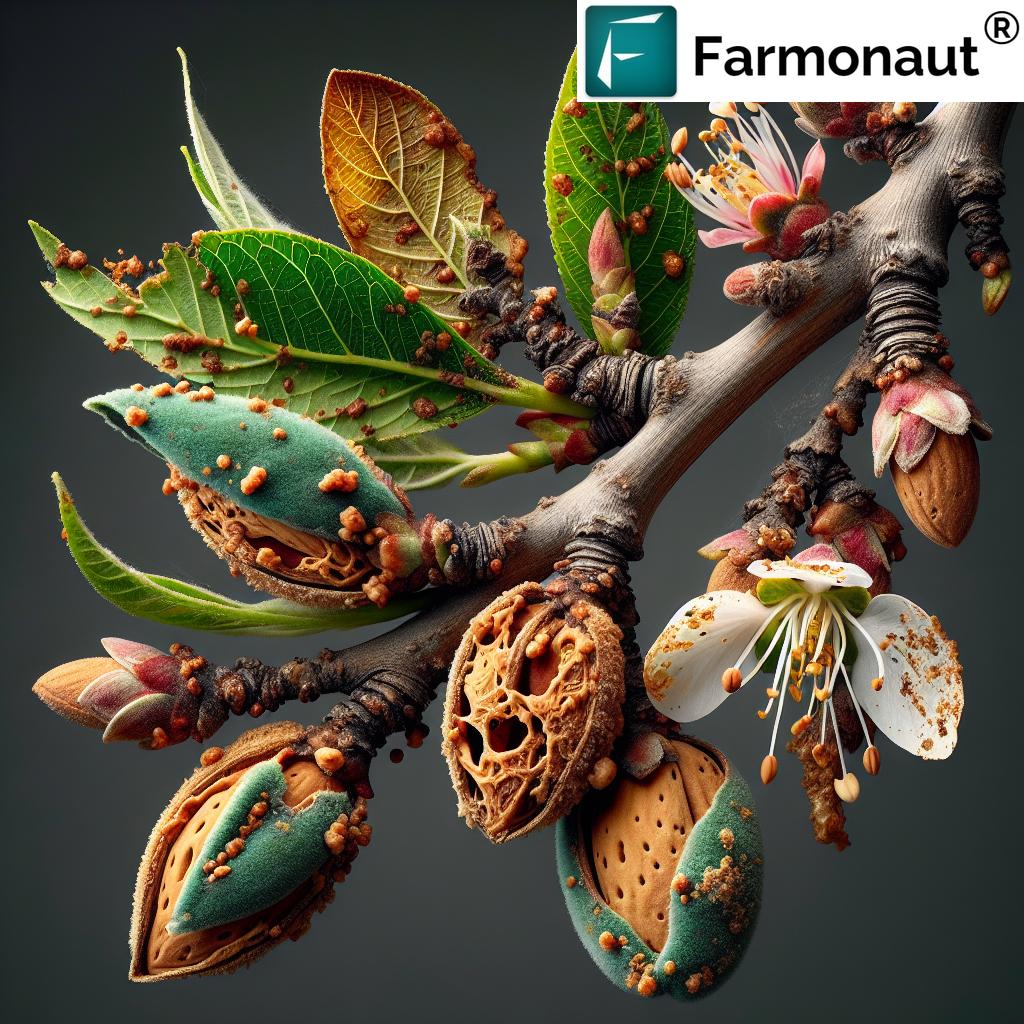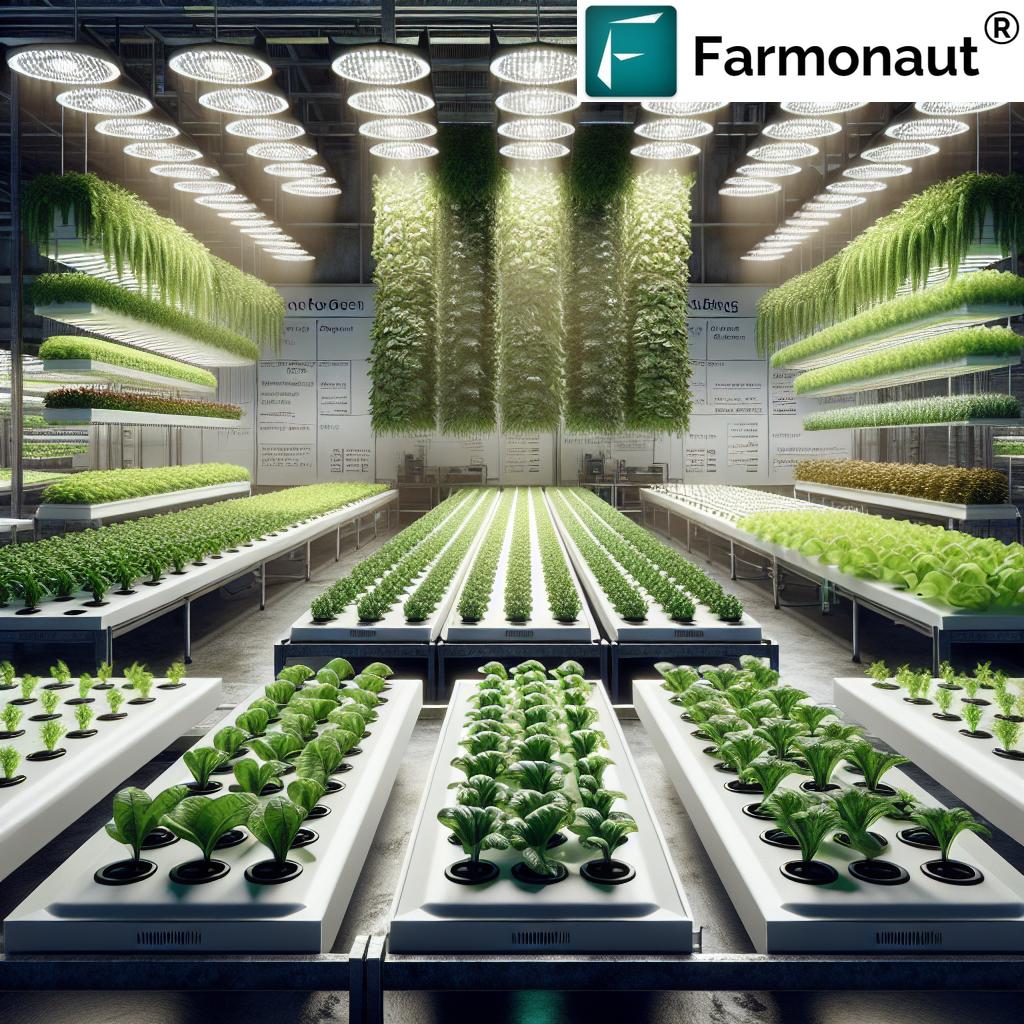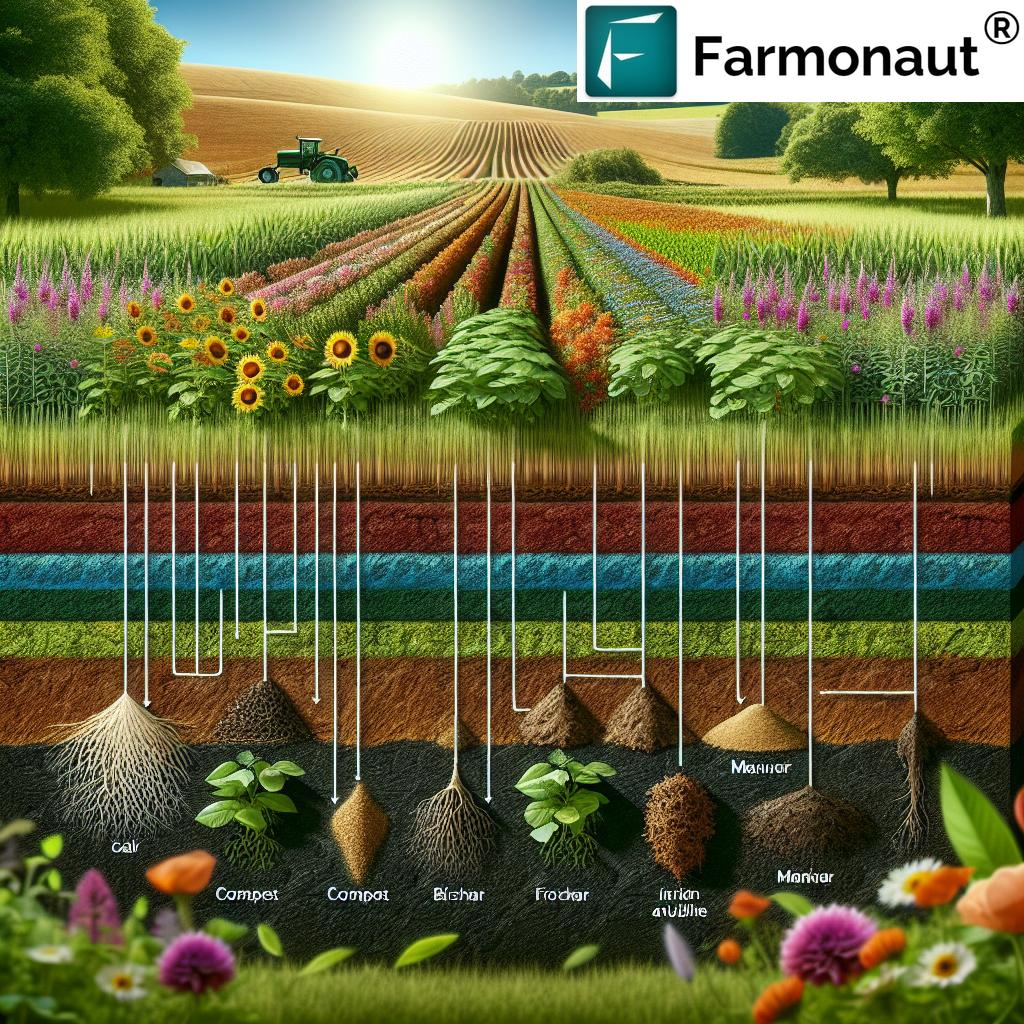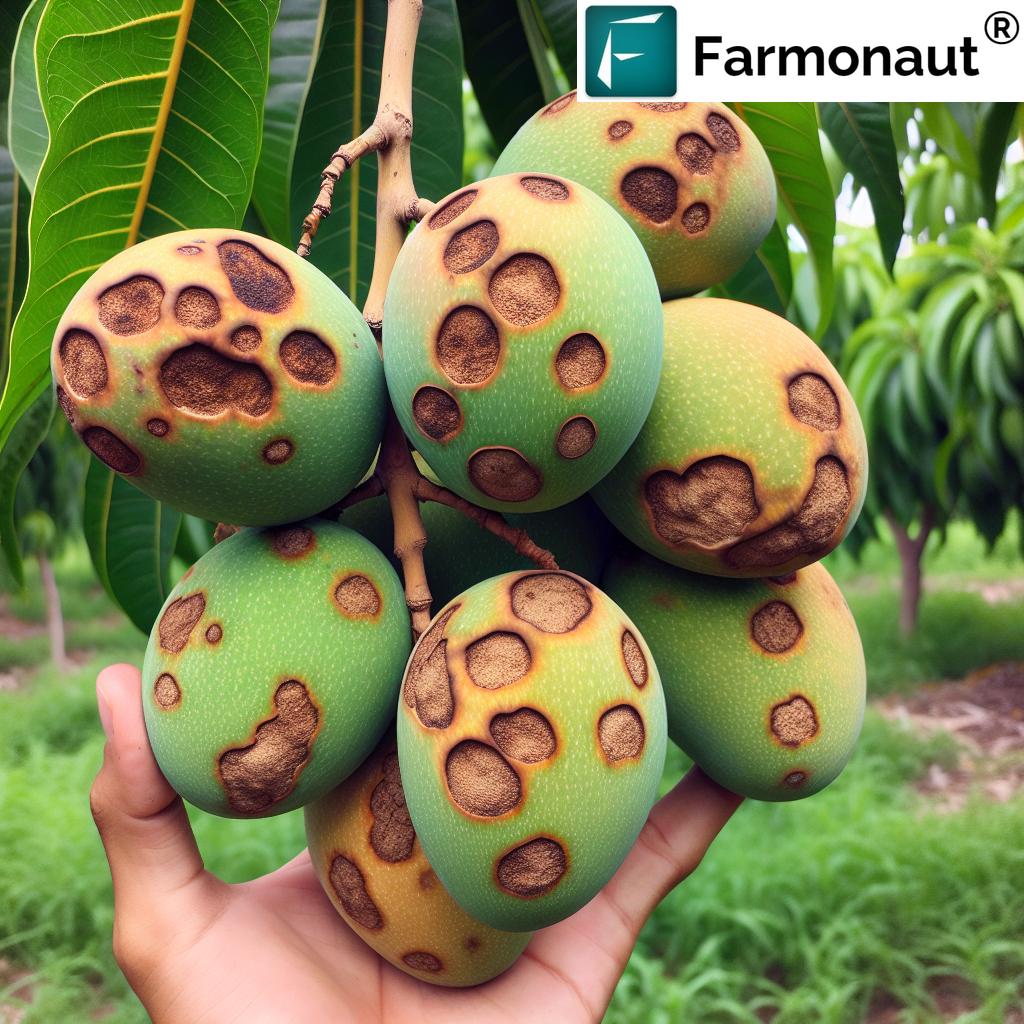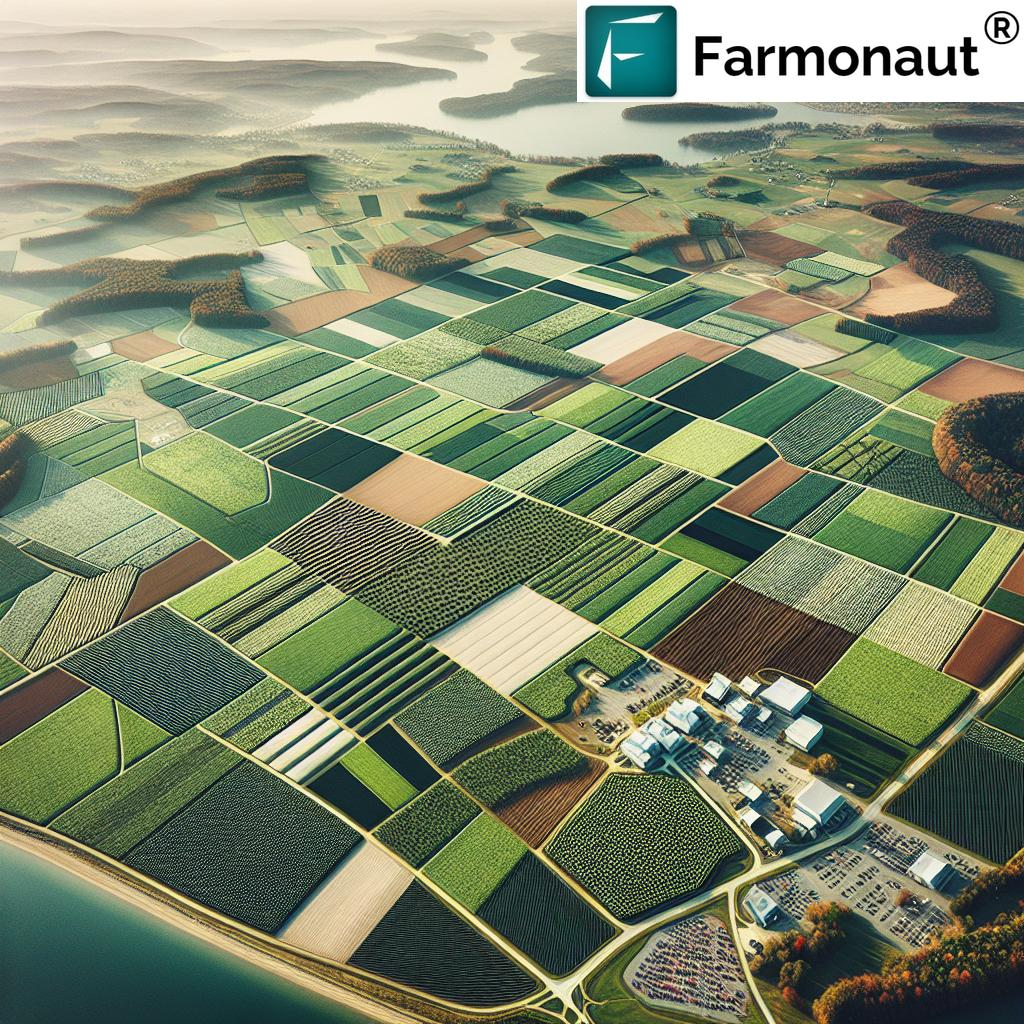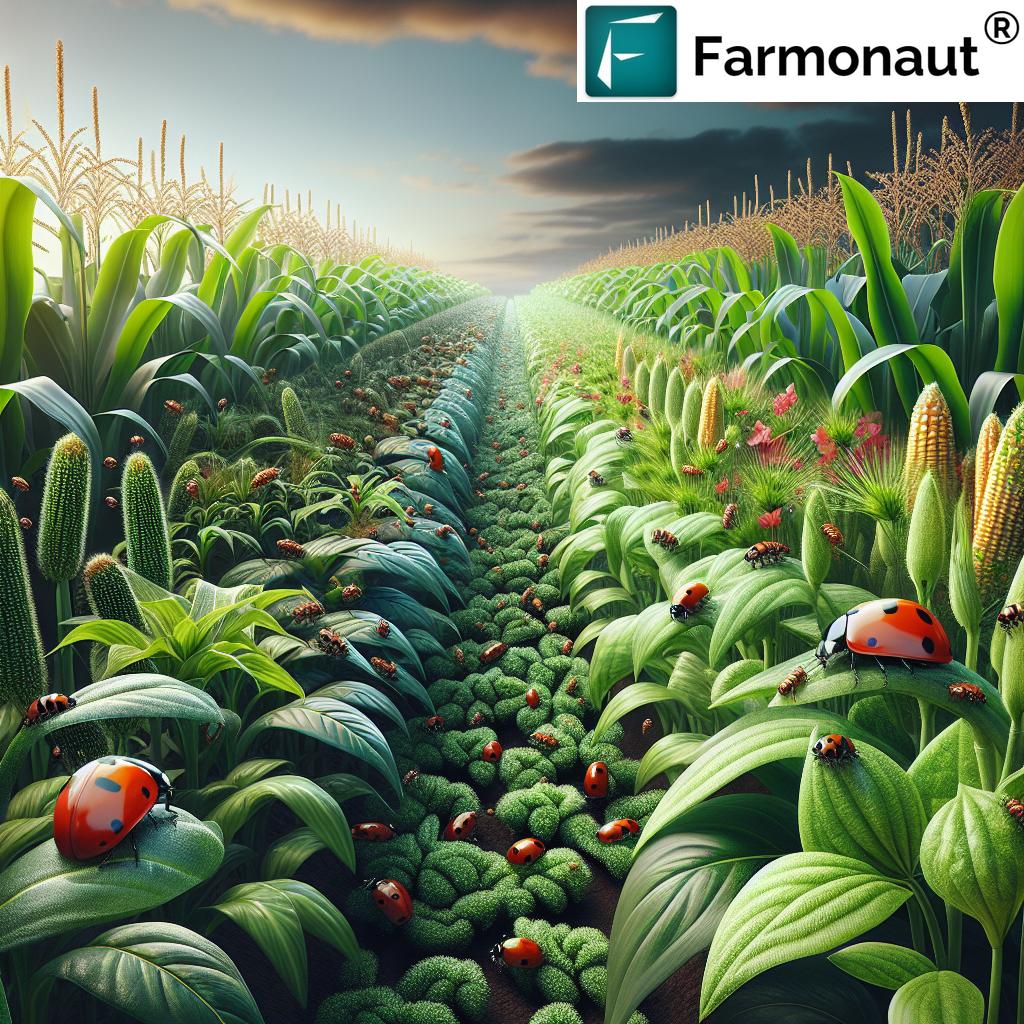Agricultural Packaging: 7 Key Sustainable Trends Revolutionizing the Industry
“Over 60% of new agricultural packaging in 2023 used biodegradable materials, up from 35% in 2018.”
Table of Contents
- Introduction: The Role of Agricultural Packaging
- Types of Agricultural Packaging: Diverse Solutions for Specific Needs
- Materials Used in Agricultural Packaging: Biodegradable, Plastic, & Innovative Options
- Sustainability Considerations in Agricultural Packaging
- 7 Key Sustainable Packaging Trends in Agriculture
- Comparative Trends Table: Evaluating Key Innovations
- Explore Smart Packaging and Farmonaut Technologies
- How Farmonaut Empowers Sustainable Agricultural Packaging
- FAQ: Agricultural Packaging Trends & Solutions
- Conclusion: The Future of Agricultural Packaging
Introduction: The Role of Agricultural Packaging in Modern Farming and Forestry
Agricultural packaging is a pivotal component that bridges the gap between the field and the consumer. It ensures the safe transport, storage, and presentation of a broad spectrum of agricultural goods, spanning everything from grains and fresh produce to processed food products and forestry outputs. Beyond its crucial protective function, packaging also influences product quality, shelf life, and marketability—factors central to a product’s success in today’s competitive market.
Recent years have seen a surge of innovation in this space. Driven by environmental sustainability and consumer demand for transparency, new technologies and materials are revolutionizing the industry. Biodegradable packaging materials, smart packaging, modified atmosphere packaging (MAP), and other advanced solutions are addressing long-standing challenges in extending shelf life and reducing waste. Understanding these developments is essential for anyone invested in the future of farming, forestry, and food supply chains.
Types of Agricultural Packaging: Diverse Solutions for Specific Needs
The agricultural sector utilizes a wide range of packaging types, each tailored to specific products and needs. The right packaging choice is fundamental to ensuring the safe presentation, transport, and storage of produce, while enhancing shelf life, product quality, and marketability.
1. Flexible Packaging for Produce
- Definition: Flexible packaging uses non-rigid, often lightweight, customizable materials such as pouches, bags, and films.
- Benefits:
- Space-saving and convenient for small and bulk items
- Barrier properties protect against air, moisture, and contaminants
- Can be customized for branding and consumer appeal
- Extent shelf life for fresh produce (e.g., berries, leafy greens)
- Environmental Note: When made from biodegradable films, offers sustainable packaging solutions (source).
2. Rigid Packaging: Boxes, Crates, & Bins
- Definition: Involves using sturdy containers, boxes, crates, and bins made from plastic, wood, or metal.
- Benefits:
- Robust protection for physically sensitive or delicate goods (e.g., apples, tomatoes)
- Ideal for bulk transport and storage
- Reusable designs—wooden crates** are especially noted for their durability
3. Modified Atmosphere Packaging (MAP)
- Definition: MAP involves altering the atmospheric composition inside the package to slow respiration in perishable goods, thereby extending shelf life.
- Examples: Fruits, vegetables, meat, and fresh herbs.
- Advantages:
- Slows spoilage and decay
- Enhances freshness and marketability
- Reduces food waste
4. Vacuum Packaging
- Function: By removing air and sealing products tightly, vacuum packaging preserves freshness, reduces oxidation and microbial growth, and keeps products like cheese and cured meats safe from spoilage.
- Use cases: High-value, perishable products.
5. Edible Packaging
- Innovation: Edible packaging is made from natural, food-safe components and is consumed with the product, eliminating packaging waste at the source (source).
- Examples: Edible films made from starch, proteins, or alginates.
- Note: Still in developmental phases, but a promising trend for eco-friendly agricultural packaging.
Materials Used in Agricultural Packaging: Biodegradable, Plastic, & Innovative Options
Choosing the right packaging materials is crucial for balancing protection, cost, shelf life extension, and environmental sustainability. Here are the dominant material categories and their roles in agricultural packaging:
Biodegradable Packaging Materials
- Definition: Derived from renewable plant-based sources; decomposes naturally after use (source).
- Top examples: Polylactic Acid (PLA), mushroom mycelium packaging, starch-based films.
- Environmental impact: Drastically reduces plastic waste and carbon footprint.
Paper and Cardboard
- Usage: Common in both primary and secondary packaging.
- Benefits: Customizable, cost-effective, biodegradable—favored for branding/retail applications ().
Plastics and Plastic Alternatives
- Strengths: Versatile, lightweight, durable, with customizable barrier properties.
- Weakness: Conventional plastics increase environmental footprint and waste.
- Sustainable shift: Growing use of biodegradable films and recyclable plastic options ().
Natural Fibers: Jute, Burlap
- Definition: Renewable, breathable, biodegradable fibers used for packaging dry goods like grains, onions, and potatoes.
- Advantages: Promotes moisture balance, prevents spoilage.
Wooden Crates and Bins
- Application: Favored for their robust protection especially during long-distance transport of heavy or fragile goods.
- Note: Wooden packaging can be reused, refurbished, and recycled ().
Sustainability Considerations in Agricultural Packaging
Sustainability remains a top concern across the agricultural sector. As consumers become more environmentally conscious, producers and brands are pushed to adopt eco-friendly agricultural packaging that minimizes waste, reduces carbon footprint, and conserves resources.
- Minimizing Waste: Sustainable design reduces excess packaging, utilizes recyclable materials, and encourages reusability.
- Life Cycle Management: Evaluating the full environmental impact—from raw materials to decomposition or recycling (source).
- Consumer Engagement: Eco-friendly claims are highly valued in branding, often influencing purchase decisions.
- Innovation: New developments like mushroom mycelium packaging highlight the industry’s commitment to reducing environmental impact.
- Regulatory Compliance: Increasingly stringent regulations are spurring investments in compostable and biodegradable packaging solutions ().
“Smart packaging technologies can extend produce shelf life by up to 40%, reducing food waste significantly.”
7 Key Sustainable Packaging Trends in Agriculture
The agricultural packaging industry is experiencing rapid transformation, driven by sustainability, consumer expectations, and emerging technology. Below, we delve into seven innovative trends that are defining the future of agricultural and forestry packaging globally.
-
1. Biodegradable Packaging Films & Materials
The rise of biodegradable packaging materials—such as PLA, cellulose, and mushroom mycelium—is helping the industry minimize environmental impact. These materials decompose naturally after disposal, making them ideal for both flexible and rigid packaging designs.
- Examples: PLA film bags for salad greens, mycelium crates for produce transportation.
- Benefit: Supports branding as an eco-conscious provider and meets growing regulatory demands.
-
2. Smart Packaging Technologies
Smart packaging incorporates sensors and digital elements, providing real-time information about freshness, temperature, and product origin. This not only enhances transparency but also empowers consumers to make informed choices and reduces food waste by signaling when a product is approaching the end of its optimal shelf life.
- Applications: QR codes, freshness sensors, temperature indicators on perishable produce packaging.
- Benefit: Builds consumer trust and enables traceability in the farming-to-fork journey.
-
3. Modified Atmosphere Packaging (MAP) for Shelf Life Extension
Modified Atmosphere Packaging helps preserve products by altering the gaseous environment inside packaging, significantly extending shelf life and maintaining quality.
- Impact: Especially beneficial for fresh produce, meats, and ready-to-eat meals.
- Benefit: Reduces spoilage and food loss throughout the supply chain.
-
4. Packaging from Agricultural Waste & Mycelium
Innovative farms are converting agricultural byproducts—including straw, husks, and mushroom mycelium—into high-performance packaging that is both biodegradable and sturdy.
- Example: Mycelium crates decompose within 45 days without leaving microplastics.
- Environmental Benefit: Reduces agricultural waste and closes material loops.
-
5. Personalized and Customized Packaging Design
With advances in digital printing and batch customization, customized packaging designs enable brands to connect with consumers personally and emotionally. This enhances brand loyalty—an essential asset in premium and specialty markets.
- Application: On-demand printing of farm origin, messages, dietary information, and traceability links.
-
6. Augmented Reality & Immersive Digital Experiences
Augmented reality (AR) transforms packaging into a digital gateway. Consumers can use smartphones to scan packaging and access virtual farm tours, crop histories, and recipe suggestions—strengthening the connection between the farm, product, and consumer.
- Use case: Lettuce packaging with QR code unlocks a 360° greenhouse tour and cultivation timeline.
-
7. Collaborative, Consumer-Inspired Packaging Design
Leading farms now involve customers in collaborative design processes—incorporating feedback on functionality, aesthetics, and sustainability before mass adoption.
- Result: Packaging that directly aligns with market needs, increasing appeal and efficiency.
Comparative Trends Table: Evaluating Key Innovations in Agricultural Packaging
| Trend Name | Description | Example Materials/Technologies | Estimated Adoption Rate (%) | Potential Shelf Life Improvement (%) | Environmental Benefit |
|---|---|---|---|---|---|
| Biodegradable Packaging Films | Films and pouches that decompose quickly after use. | PLA, cellulose, mycelium, corn starch | 60% | 15–30% | Eliminates plastic waste, reduces landfill load. |
| Smart Packaging Technologies | Sensors provide real-time data on freshness, safety. | RFID chips, QR codes, freshness & temperature indicators | 25% | Up to 40% | Minimizes food waste, improves resource efficiency. |
| Modified Atmosphere Packaging (MAP) | Gas-modified environments preserve freshness longer. | N2, CO2 flush, tailored permeability films | 40% | 30–50% | Reduces spoilage and food waste. |
| Agricultural Waste & Mycelium Packaging | Repurposes agri-waste into functional packaging. | Mycelium, rice husks, straw composites | 18% | 10–20% | Reduces landfill, air pollution; closes material loops. |
| Customized Packaging Design | Packaging tailored for brand, product, and consumer. | Digital printing, QR-enabled packs, flexible substrates | 50% | 5–10% | Enhances shelf appeal; can reduce excess material use. |
| Augmented Reality Experiences | Digitally immersive packaging for consumer engagement. | AR enabled QR codes, smartphone AR apps | 12% | ~5% | Boosts consumer education and engagement. |
| Collaborative Consumer Design | End-users participate in packaging design choices. | Community focus groups, digital surveys | 10% | Variable | Ensures solutions meet practical needs, preventing waste. |
All statistics are estimates based on recent industry reports; adoption and improvement potential will vary by geography, product, and sector segment.
Explore Smart Packaging and Farmonaut Technologies
How Farmonaut Empowers Sustainable Agricultural Packaging & Traceability
As the agricultural sector accelerates toward smart packaging technologies, traceability, and sustainability, Farmonaut stands out as a technology innovator, delivering data-driven insights and solutions for farmers, agribusinesses, and related industries. Our advanced platform, which runs through Android, iOS, web app, and robust APIs, brings a new level of intelligence and efficiency to packaging decision-making.
- Satellite-Based Crop Monitoring: We provide real-time crop health monitoring using multispectral satellite imagery and AI, allowing growers to time harvesting and packaging for peak freshness and shelf life. This minimizes wastage and maximizes marketable yield.
- Blockchain-Based Product Traceability: Our system offers blockchain-secured traceability solutions, enabling transparent tracking of agricultural goods from the farm to the consumer. By integrating traceability with packaging for shelf life extension and smart labeling, we help build consumer trust and market appeal.
- Resource Management & Carbon Footprinting: We offer carbon footprint tracking tools and fleet management solutions, enabling practitioners to optimize logistics for sustainable packaging distribution and minimal environmental impact.
- AI-Driven Farming Decisions: With our Jeevn AI system, users receive insights that can directly inform not only growing, irrigation, and pest management but also post-harvest operations, storage, and packaging, all tailored to maximize shelf life and quality.
- API Access for Developers: Our comprehensive API and developer documentation enable seamless integration of satellite, weather, and traceability data into packaging management, logistics, and quality assurance systems.
- Institutional Solutions: For large-scale operators and governmental agencies, our large-scale farm management platform facilitates coordinated packaging, transportation, and resource monitoring across regional and national operations.
By combining these powerful tools, Farmonaut empowers businesses and producers to embrace sustainable packaging solutions, reduce environmental impact, and build deeper connections with consumers—while maximizing shelf life, product quality, and operational efficiency.
FAQ: Agricultural Packaging Trends & Solutions
What are the main types of agricultural packaging and their roles?
Agricultural packaging includes flexible packaging (pouches, films), rigid packaging (boxes, crates), modified atmosphere packaging (MAP), vacuum sealed packs, and emerging formats like edible packaging. Flexible types are great for lightweight, customizable applications, while rigid packaging provides robust protection for fragile or bulk items. MAP and vacuum packaging are key for extending shelf life and preventing spoilage.
How does biodegradable packaging reduce environmental impact?
Biodegradable packaging materials like PLA and mycelium decompose naturally after use, minimizing landfill waste and eliminating microplastics—a crucial advancement for sustainable packaging solutions in agriculture.
What is the benefit of smart packaging technologies for consumers and producers?
Smart packaging uses sensors, freshness indicators, and traceability tools to provide real-time data on product condition, origin, and safety—enhancing consumer trust, reducing food waste, and improving supply chain efficiency.
How does Farmonaut support sustainability in agricultural packaging?
We enable precision agriculture via satellite monitoring, AI-based advisory, and blockchain traceability, offering data that informs optimal packaging timing, shelf life extension, and eco-friendly logistics planning. Our carbon footprinting and fleet management modules further help producers minimize their environmental impact.
What are the latest innovative packaging trends in agriculture?
Emerging trends include biodegradable films, packaging made from agricultural waste, smart packaging technologies with real-time monitoring, customized and AR-enabled packaging designs, and collaborative consumer-guided design protocols.
Where can I learn more about digital innovation and farm management?
Explore our solutions via our web and mobile apps, or access advanced tools through our APIs and developer documentation for direct integration.
Conclusion: The Future of Agricultural Packaging Is Sustainable, Smart, and Consumer-Centric
Agricultural packaging now does far more than provide protective transport—it shapes product quality, shelf life, and the overall consumer experience. As we have explored, a new generation of sustainable packaging solutions is reshaping the industry: biodegradable packaging materials, modified atmosphere packaging, packaging from agricultural waste, personalized smart packaging technologies, and immersive digital experiences are just the beginning.
For forward-looking farms, agribusinesses, and policymakers, investing in these innovative packaging trends in agriculture will be key to enhancing efficiency, reducing environmental impact, and creating profitable connections with consumers. By leveraging tools like those provided by Farmonaut—from real-time satellite monitoring and traceability to resource optimization—stakeholders can drive lasting value while advancing sustainability and operational excellence throughout the food system.
The future of agricultural packaging belongs to those who embrace innovation, sustainability, and meaningful engagement—helping produce reach consumers fresher, safer, and with the lightest possible footprint on our planet.






